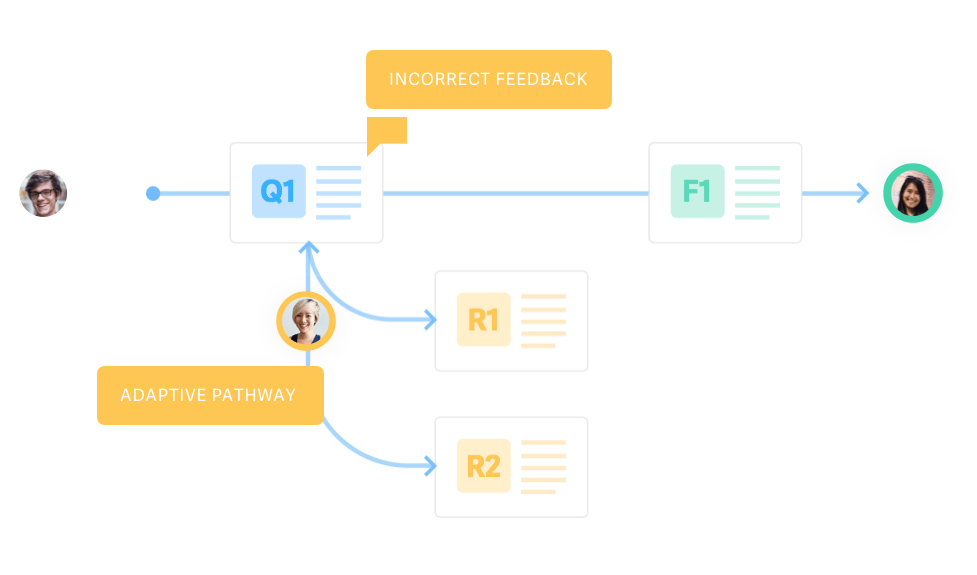An instructional designer recently wrote a blog post questioning what anyone means when they talk about “engaging” learning experiences. In it, he wonders about the different values of visual, physical, and mental engagement on improving learning experiences.
We believe that the three types of engagement are inextricably intertwined — no one type is good enough on its own.
Engaging a Room of Varied Learners
The Glossary of Education Reform defines engagement as “the degree of attention, curiosity, interest, optimism, and passion that students show when they are learning or being taught, which extends to the level of motivation they have to learn and progress in their education.”
Today when we talk about learning, people are discussing (and disagreeing on, of course!) Learning Styles and Multiple Intelligences. The baseline for every discussion is figuring out the best way to use the many modalities of teaching to empower better, long-lasting learning. Some students prefer to learn when presented information alongside high-fidelity visuals, others through hands-on activities and knowledge-mapping, others through storytelling, and the list goes on. With this in mind, how do we make sure we’re providing experiences that engage top performers, strugglers, and all those in between?
We need to design lessons and courses that don’t focus on just one way to learn. Our solutions should combine all the different ingredients in a way that makes sense for the content and subject area in question, to create the most meaningful learning experience for each learner.
It’s no easy feat. But with technology, it becomes feasible. This thoughtful combination of learning solutions is leading the wave of Learning 2.0.
Features of an Engaging Learning Experience
We need to create experiences that include our students and put them at the center of the design process, encouraging them to get excited, react to what they’re learning, and interact with the material. You can create more engaging learning experiences by focusing on these three components when you are designing lessons:
1. Make lessons adaptive & personalized
The best learning experiences respond to the student’s unique learning profile in order to motivate, encourage, and inspire confidence in their ability to learn. Just as a tutor changes what and how they teach based on what they know about the student, digital learning experiences should adapt to match each individual’s prior knowledge, proven understanding, learning goals, demographics, and so on. That personalization helps learners feel more connected to the experience, and makes what they’re learning feel more relevant.
Adaptive Feedback and Adaptive Pathways should be used to make sure you reach every student. You can provide hints, further resources, additional practice problems, different types of activities, and information specific to the individual learner’s needs. If the lesson refers to a student by name, references previous responses within a lesson, or gives them options on how they’d like to learn, even better.

In this mock lesson flow, you can see that each screen has several possible responses for a student, as well as several different routes they could travel based on their interactions or learner profile.
2. Make lessons active & thought-provoking
One of the aforementioned aspects of student engagement is their “degree of attention” — getting them to lean in and form connections with what they’re learning.
Better interactive learning activities engage students at deeper levels. Instead of passively skimming a PDF and possibly skipping important details, they have to pay attention to an activity. Of course, just any learning activity is not good enough. Instructors must intentionally plan the activity to make sure it meets intended learning outcomes and helps students focus on solidifying new information.
 Example of a lesson activity as part of Digital Identity provided at La Trobe University.
Example of a lesson activity as part of Digital Identity provided at La Trobe University.
You can create thought-provoking lessons through storytelling or connecting what the students are learning in the class to what they already know from the outside world. BioBeyond is an example of a class that uses a thought-provoking question (“Are we alone in the universe?”) to engage student curiosity. The course teaches them how to use basic biology concepts to answer this question, connecting foundational biology concepts with how they’re being used in the real world.
3. Make lessons highly visual
Think about a time when you’ve watched a presentation given by a colleague; if a presentation is just white slides with black text, do you get excited? No. Visual design doesn’t decide if your audience is engaged with the material, but it does determine whether or not they like looking.
Highly visual, well-designed lessons capture student attention from the get-go. Engage and surprise them by creating learning experiences that make them say, “Oh wow! That looks really cool!”
 Example of a highly visual learnspace created by NRC and Smart Sparrow.
Example of a highly visual learnspace created by NRC and Smart Sparrow.
Learning 2.0, Creating More Engaging Lessons
To engage all of our students, instructors need to offer various types of learning experiences within one classroom — sometimes even within one lesson. The Learning 2.0 wave focuses on ensuring that lessons adapt to different student profiles, knowledge, and learning needs in a way that is optimally engaging.
If you’re seeking a tool to help you create engaging learning experiences, try using Smart Sparrow for free. We’re always available to help you design lessons or answer your questions, so don’t hesitate to reach out.


